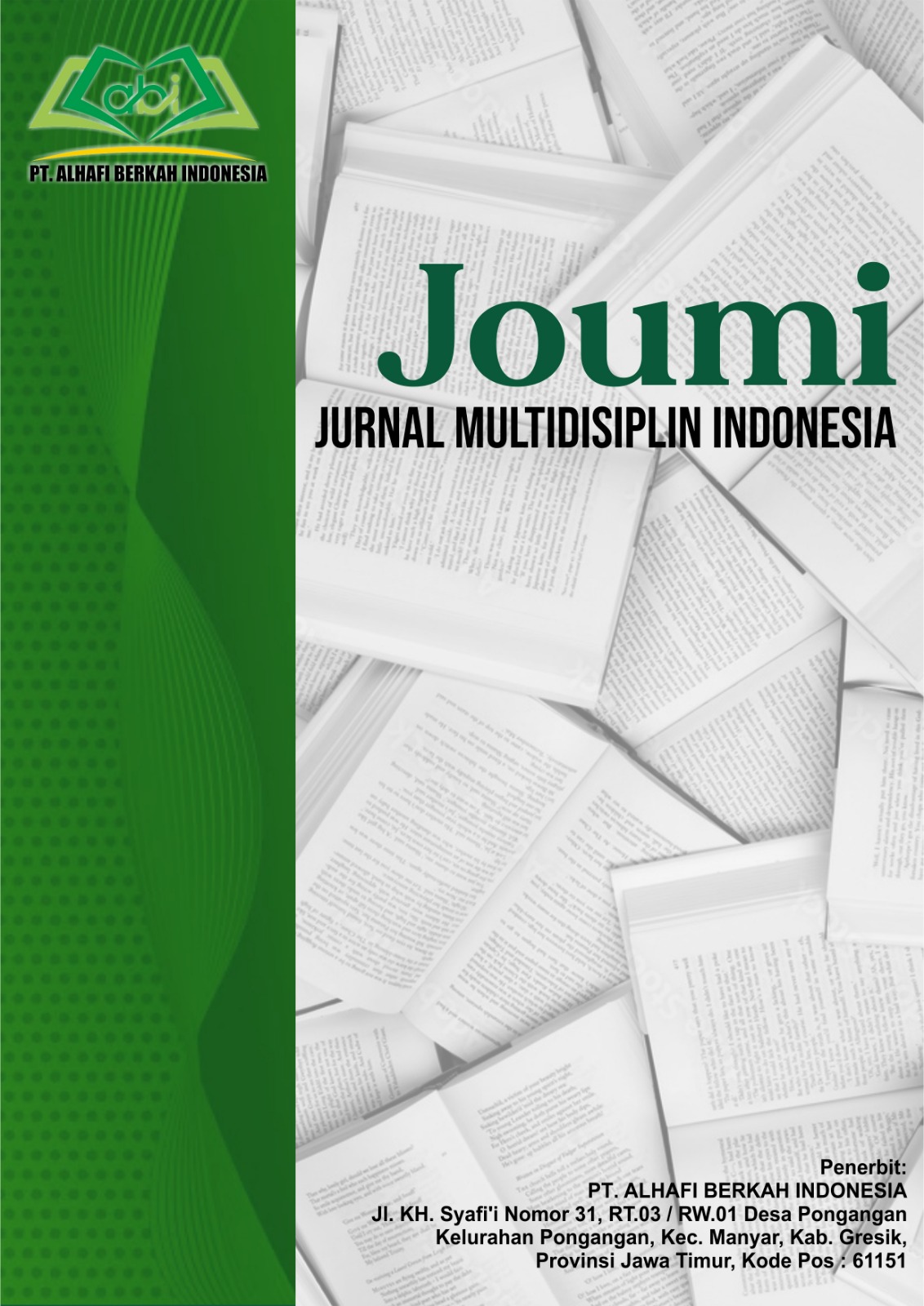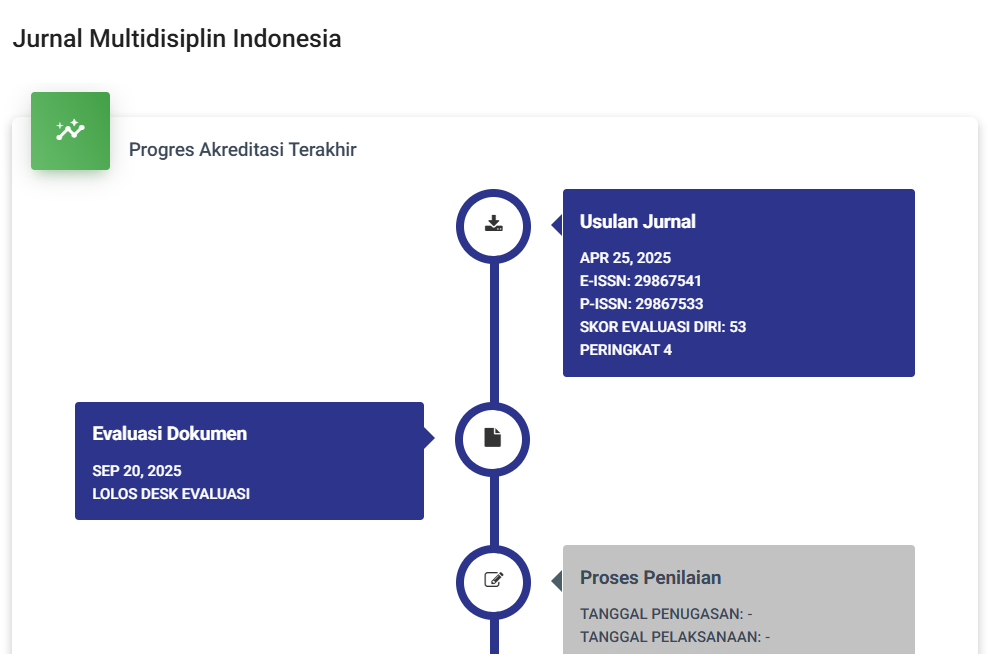Implications of Differences in Professional Certification Authority between Bank Indonesia and the Financial Services Authority on the Effectiveness and Mitigation of Systemic Risk in the Financial Services Industry
DOI:
https://doi.org/10.62007/joumi.v3i2.487Keywords:
Professional Certification, Financial Services Sector, OJK, Bank IndonesiaAbstract
This study examines the problem of disharmony in the regulation and implementation of professional certification in the financial services sector after the issuance of Law Number 4 of 2023 concerning the Development and Strengthening of the Financial Sector (PPSK Law). The main focus of the study is the analysis of the overlapping authority between the Financial Services Authority (OJK) and Bank Indonesia (BI) and the impact of granting certification authority to professional associations as stated in Article 261 of the PPSK Law. The provision is considered to create dualism in the certification system that weakens the integrity and accountability of the competence of professional personnel in the financial industry. This study reviews the differences in approach between the Professional Certification Institution (LSP) based on the Indonesian National Work Competency Standards (SKKNI) and certification organized by professional associations and evaluates its implementation by OJK and BI. Through a juridical-normative approach and supported by empirical data from strategic institutions, this study finds that the lack of system integration and lack of institutional coordination have an impact on the non-uniformity of competency standards and the potential for systemic risk in the financial services sector. Therefore, a policy harmonization model is needed that emphasizes the importance of integrating the SKKNI-based certification system, with LSP as the main implementer and professional associations as supporting partners, to ensure equal and credible HR quality across all financial services subsectors.
References
Abdianti, D. R. (2023). Konsep Kebijakan Moneter dalam Perspektif Ekonomi Islam. Jurnal Ekonomi, Akuntansi, dan Manajemen, 1(3), 112.
Akbar. C, E. A. (2022). Manajemen Risiko di Perbankan Syariah. Milkiyah: Jurnal Hukum Ekonomi Syariah, 1(2), 51-56.
Al Iqbal, M. H. (2020). Analisis Pengaruh Kewajiban Penyediaan Modal Minimum (KPMM), Beban Operasional Pendapatan Operasional (BOPO), Financing To Deposit Ratio (FDR), dan Inflasi Terhadap Return On Asset (ROA) Pada Bank Umum Syariah di Indonesia Periode. MALIA:Journal of Islamic Banking and Finance, 4(1), 1.
Anwar, C. J. (2023). Investigating the relationship between monetary policy, macro-prudential policy and credit risk in Indonesia banking industry. Heliyon, 9(7), 1332.
Arthasari, T. &. (2021). Efektifitas kebijakan moneter dan makroprudensial sebagai pengendali risiko kredit perbankan di indonesia. Akuntabel, 18(3), 585–593.
Atmojo, R. W. (2018). Analisis Efektivitas Kebijakan Moneter dan Kebijakan Fiskal terhadap Produk Domestik Bruto Indonesia. Economics Development Analysis Journal, 7(2).
Azwari, D. R. (2021). Pengaruh Rasio Intermediasi Makroprudensial (Rim) Terhadap Penyaluran Kredit Dengan Suku Bunga Kredit Sebagai Variabel Moderasi (Studi Pada Bank Umum Konvensional yang Terdaftar Di Bursa Efek Indonesia). Jurnal Riset Mahasiswa Akuntansi, 1(4), 97-110.
Bank Indonesia. (2021). Pengawasan Bank: Agar Bank Sehat, Uang Nasabah Selamat, Ekonomi Kuat. Jakarta: Gerai Info Newsletter Bank Indonesia.
Campos, M. F. (2019). Efektifitas kebijakan makroprudensial dan suku bunga SBI terhadap risiko kredit perbankan di Indonesia. Management and Business Review, 3(1), 23-32.
Colin, R. &. (2014). Analisis Pengaruh Resiko Perbankan Dan Kebijakan Moneter Terhadap Kemampuan Perbankan Dalam Penyaluran Kredit. Jurnal Ekonomi Dan Keuangan, 2(7), 14809.
Herlina, D. (2018). Identifikasi Mekanisme Transmisi Kebijakan MoneterSaluran Uang dan Saluran Suku Bunga di Indonesia. Jurnal Ekonomi-Qu, 8(2).
Mahrous, S. N. (2020). The effect of monetary policy on credit risk: evidence from the MENA region countries. Review of Economics and Political Science, 5(4), 289–304.
Nuryana, I. (2017). Assessment on Macroprudential Instrument. Referensi : Jurnal Ilmu Manajemen Dan Akuntansi, 5(1), 55-68.
Opriyanti, R. (2017). ANALISIS EFEKTIVITAS KEBIJAKAN MONETER DAN KEBIJAKAN FISKAL DALAM MENGATASI INFLASI DI INDONESIA. Media Trend, 12(2).
Putri Lailatul Aria, &. R. (2023). Pengaruh Npf dan Fdr Terhadap Pendapatan Operasional Bank Syariah di Indonesia. Wawasan : Jurnal Ilmu Manajemen, Ekonomi Dan Kewirausahaan, 1(3).
Silalahi, P. &. (2022). Analisis Pengaruh Kebijakan Moneter Dan Makroprudensial Terhadap Risiko Bank Di Indonesia. Jurnal Riset Manajemen Dan Bisnis, 17(1), 1.
Sutawijaya, A. (2012). Pengaruh Faktor-Faktor Ekonomi Terhadap Inflasi di Indonesia. Jurnal Organisasi Dan Manajemen, 8(2), 85-101.
Swaningrum, A. &. (2014). Evaluasi Efektifitas Instrumen Makroprudensial dalam Mengurangi Risiko Sistemik di Indonesia. 3rd Economics & Business Research Festiva, 1126-1133.
Yudha, A. T. (2021). Analysis of Macroeconomic Fluctuations Impact on Efficiency and Islamic Banking Quality 2015-2019. Jurnal Ekonomi Dan Bisnis Islam (Journal of Islamic Economics and Business), 7(2), 231.
Zaini, Z. D. (2013). ubungan Hukum Bank Indonesia Sebagai Bank Sentral Dengan Otoritas Jasa Keuangan (OJK) Pasca Pengalihan Fungsi Perbankan. Jurnal Media Hukum, 20(2), 377.
Downloads
Published
How to Cite
Issue
Section
License
Copyright (c) 2025 Miftakul Azis, Zudan Arief Fakrulloh

This work is licensed under a Creative Commons Attribution-ShareAlike 4.0 International License.







